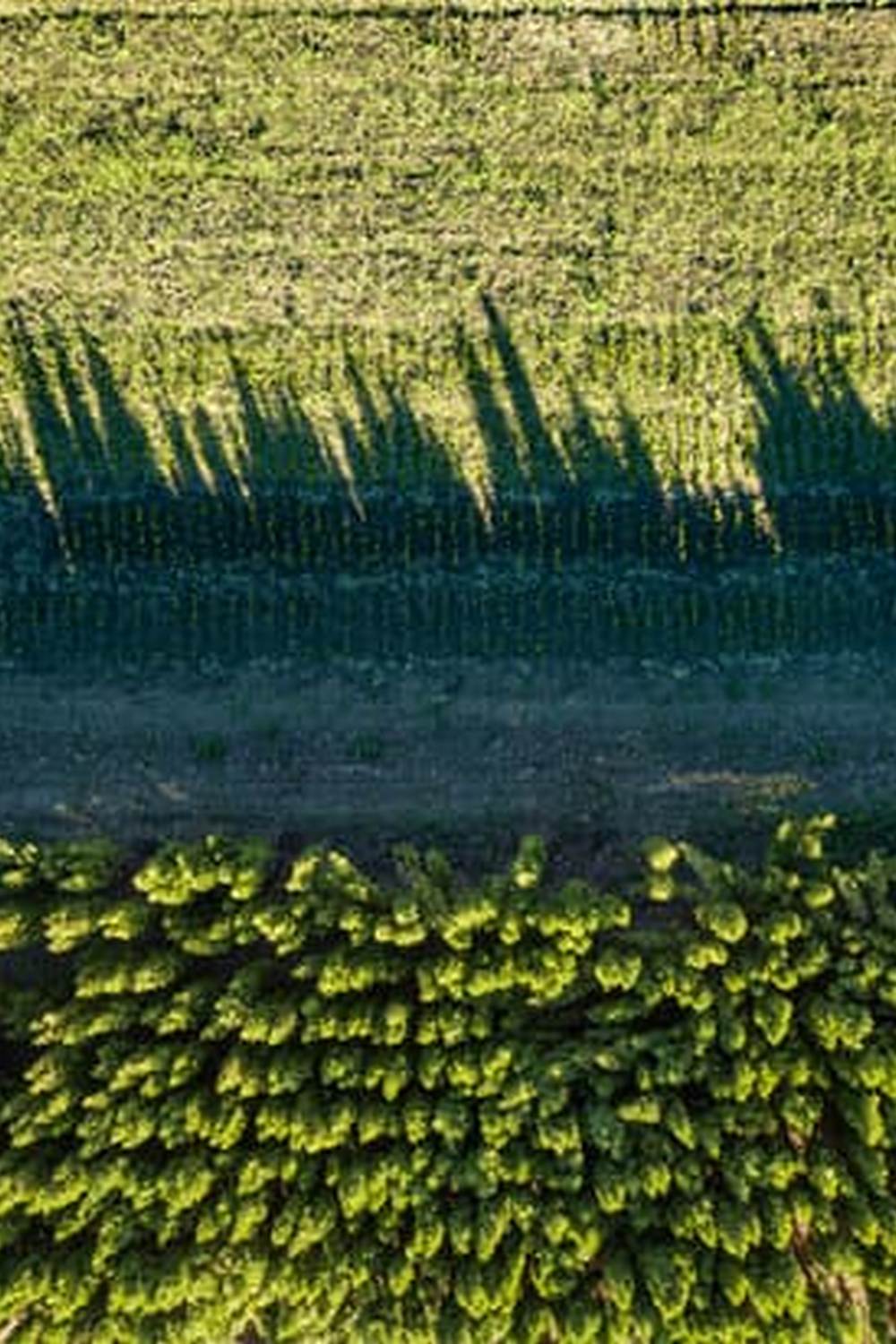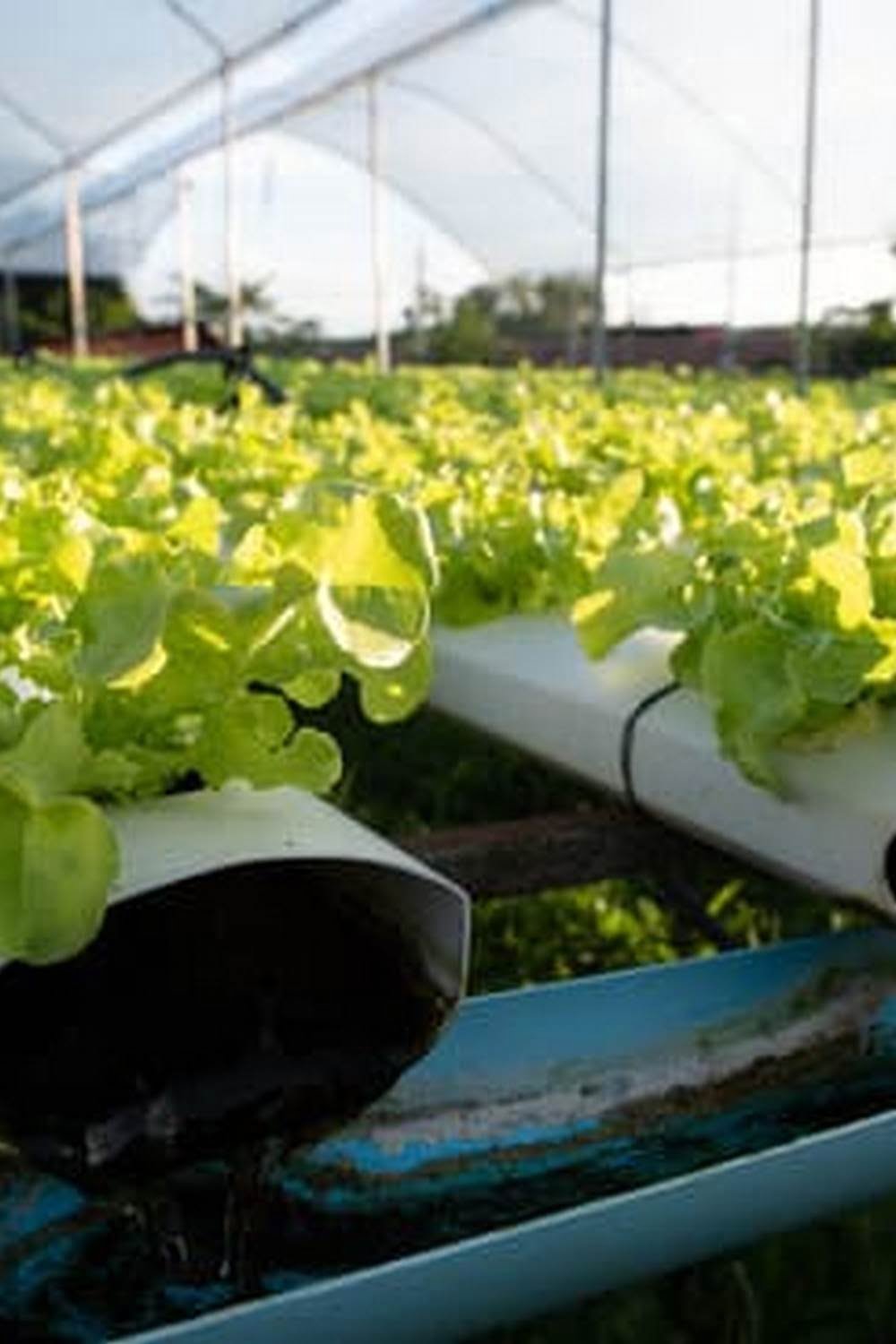In recent years, there has been a noticeable increase in the popularity of urban gardening, as more and more city-dwellers seek to bring greenery into their concrete surroundings. This trend has given rise to innovative gardening techniques, including the use of concrete for cultivating vegetables. In this article, we will explore the growing appeal of concrete gardening and its potential for successful vegetable cultivation.
Concrete gardening offers a unique solution for urban residents who may lack traditional garden space. By utilizing concrete containers and raised beds, individuals can optimize the limited space available to them while still reaping the rewards of a flourishing vegetable garden. These durable and practical options provide an accessible way to engage in gardening within an urban environment.
With the increasing interest in sustainable living and self-sufficiency, many people are turning to vegetable gardening as a means of providing fresh produce for themselves and their families. The use of concrete containers for vegetable cultivation not only allows for efficient space utilization but also offers a long-lasting and low-maintenance option for those seeking to grow their own food in an urban setting.
Benefits of Concrete Gardening
Concrete gardening offers numerous benefits for urban and small-space gardeners. One of the primary advantages is its accessibility, as concrete containers and raised beds can be easily positioned on patios, balconies, and rooftops, allowing individuals with limited outdoor space to still enjoy vegetable gardening.
Additionally, the use of concrete enables efficient space optimization, as containers and raised beds can be designed to fit specific areas, making the most out of every available inch. Furthermore, durability is a key feature of concrete gardening, with containers and raised beds being able to withstand various weather conditions and potential wear and tear.
When it comes to choosing the right concrete containers and raised beds for vegetable gardening, there are several factors to consider. It’s important to select containers or beds that offer sufficient depth for root development while also providing proper drainage.
Additionally, the weight of the container or bed should be taken into account, especially for rooftop gardens or balconies where weight restrictions may apply. For those concerned about the appearance of concrete in their gardening space, there are now a wide variety of designs, finishes, and colors available for containers and raised beds made from this material.
In terms of vegetable gardening in concrete containers and raised beds, there are several essential tips to keep in mind. Providing adequate soil depth is crucial for healthy plant growth, so adding a mix of quality potting soil and compost is recommended.
Regular watering is also important due to the porous nature of concrete containers; however, be cautious not to overwater as this can lead to waterlogged soil. Lastly, it’s essential to monitor plant nutrient levels more closely when using concrete containers as they can affect soil pH over time.
| Benefits | Details |
|---|---|
| Accessibility | Easily positioned on patios,, balconies & rooftops |
| Space Optimization | Designed to fit specific areas efficiently |
| Durability | Able to withstand various weather conditions & wear and tear |
Choosing the Right Concrete Containers and Raised Beds for Vegetable Gardening
When it comes to vegetable gardening in a concrete setting, choosing the right containers and raised beds is crucial for the success of your garden. The following are some essential factors to consider when selecting the appropriate concrete containers and raised beds for your vegetable gardening:
- Size and Depth: Consider the space available for your vegetable garden and select containers or raised beds that provide adequate room for root growth. Vegetables like carrots and potatoes require deeper containers, while herbs and lettuce can thrive in shallower ones.
- Drainage: Ensure that the containers or raised beds have proper drainage holes to prevent waterlogging, which can lead to root rot. If using concrete pots without drainage holes, consider adding a layer of gravel at the bottom to improve drainage.
- Material Quality: Look for durable and well-constructed concrete containers and raised beds that can withstand outdoor elements. Opt for high-quality concrete that is specifically designed for outdoor use to ensure longevity.
In addition to these considerations, it’s important to think about the aesthetic appeal of the containers or raised beds. Concrete gardening doesn’t have to be dull and lifeless – there are numerous options available in terms of design, color, and texture.
When selecting concrete containers for vegetable gardening, remember that they can also serve as decorative elements in your outdoor space. Use this opportunity to express your style by personalizing the containers with paint, mosaic tiles, or other creative embellishments.
By carefully considering these factors when choosing concrete containers and raised beds for your vegetable gardening, you can create a practical yet visually appealing urban garden that thrives in any space.
Essential Tips for Successful Vegetable Gardening in Concrete Containers
When it comes to vegetable gardening in concrete containers, there are some essential tips to keep in mind to ensure successful growth and bountiful harvests. One important factor to consider is the size of the containers. Vegetables like tomatoes, peppers, and eggplants require larger containers to accommodate their root systems and provide ample space for growth. In contrast, smaller containers may be suitable for herbs and salad greens.
Another crucial tip is to prioritize drainage in concrete containers. Without proper drainage, excess water can accumulate, leading to root rot and other issues that can hamper the growth of your vegetables. To achieve good drainage, consider adding a layer of gravel at the bottom of the container before filling it with soil. Additionally, choosing containers with pre-drilled drainage holes can also help prevent waterlogged soil.
In addition, it’s vital to select the right type of soil for your vegetable garden in concrete containers. A high-quality potting mix specifically formulated for container gardening can provide the necessary nutrients and support for healthy plant growth.
Regularly fertilizing your vegetables throughout the growing season can also help maintain nutrient levels in the soil. By following these essential tips, you can create a thriving vegetable garden in concrete containers, even in urban settings where traditional gardening space may be limited.
Creative Ways to Decorate and Personalize Concrete Containers for Vegetable Gardening
When it comes to vegetable gardening in urban settings, concrete containers offer a practical and durable solution for growing an abundance of fresh produce. However, while the functionality of concrete is undeniable, many may find the appearance of plain concrete containers to be lacking in aesthetic appeal. Fortunately, there are numerous creative ways to decorate and personalize these containers, adding a touch of style and personality to your urban garden.
Here are some creative ideas for decorating and personalizing concrete containers for vegetable gardening:
1. Mosaic Designs: Add a pop of color and visual interest to your concrete containers by creating mosaic designs using broken tiles, glass pieces, or ceramic shards. This not only adds a decorative element but also provides texture and dimension to your vegetable garden.
2. Stenciled Patterns: Use stencils to paint intricate patterns or designs onto the surface of your concrete containers. Whether it’s botanical motifs, geometric shapes, or whimsical illustrations, stenciling can instantly elevate the look of your garden while showcasing your personal style.
3. Vertical Gardens: Transform plain concrete walls into living works of art by incorporating vertical gardens into your vegetable gardening space. Utilize various hanging planters, pockets, or trellises to create a lush living wall that not only serves as a backdrop but also maximizes space for growing even more vegetables.
With these creative methods, you can turn ordinary concrete containers into visually stunning elements that enhance the overall appeal of your vegetable garden while still reaping all the benefits that concrete gardening has to offer. Whether you prefer a bohemian-inspired mosaic masterpiece or a modern minimalist design, there are endless opportunities to infuse creativity into your urban gardening space.
Maintenance and Care for Concrete Containers and Raised Beds in Vegetable Gardening
Maintenance and care are essential aspects of successful vegetable gardening in concrete containers and raised beds. Proper upkeep can ensure the longevity of the containers and the health of your plants, leading to a bountiful harvest.
Regular Cleaning and Inspection
To maintain your concrete containers and raised beds, it is important to regularly clean them to remove any debris, dirt, or pests that may affect the growth of your vegetables. Inspecting the containers for cracks or damage is also crucial to address any issues before they worsen.
Sealing and Waterproofing
Applying a sealant to your concrete containers can help prevent water damage and extend their lifespan. It is important to choose a non-toxic sealant that is safe for vegetable gardening. Additionally, ensuring that the containers are properly waterproofed will protect them from moisture-related deterioration.
Pruning and Fertilizing
Regular pruning of your vegetable plants will promote healthy growth and prevent overcrowding in the containers or raised beds. Additionally, applying organic fertilizers tailored to the specific needs of your vegetables will contribute to their overall health and productivity.
Taking these maintenance measures into consideration will ensure that your concrete containers and raised beds provide a sturdy foundation for successful vegetable gardening. Embracing proper care and attention will help you create a thriving urban garden filled with an abundance of fresh produce.
Best Vegetables to Grow in Concrete Containers and Raised Beds
When it comes to vegetable gardening in concrete containers and raised beds, the choice of what to plant is crucial for a successful harvest. Some vegetables thrive better in these settings than others, making it important to carefully consider which ones to prioritize.
One of the best vegetables to grow in concrete containers and raised beds is tomatoes. These plants have shallow roots, making them ideal for containers, and they can thrive in the well-drained environment that concrete provides. Additionally, peppers, lettuce, herbs like basil and cilantro, and green onions also do well in these settings. It’s important to consider the space available and the depth of the containers when deciding which vegetables to grow.
Another great option for concrete gardening is root vegetables like carrots, radishes, and beets. These hearty crops can adapt well to the confined space of a raised bed or container as long as they have enough soil depth to allow their roots to develop fully. Furthermore, leafy greens such as spinach, kale, and Swiss chard are excellent choices for concrete gardening due to their compact growth habits and high yield potential.
In addition to traditional vegetable options, some gardeners have found success with less conventional choices such as dwarf fruit trees or berry bushes in larger concrete containers or raised beds. These can add a unique touch to any urban garden while providing a delicious harvest when properly cared for.
| Vegetables | Ideal for Concrete Gardening |
|---|---|
| Tomatoes | Yes |
| Peppers | Yes |
| Lettuce | Yes |
| Basil & Cilantro | Yes |
Success Stories and Inspirational Examples of Concrete Vegetable Gardening in Urban Settings
Urban gardening has seen a significant rise in popularity, and one of the most appealing aspects is the use of concrete for vegetable gardening. This versatile material offers a range of benefits, making it a practical choice for urban dwellers looking to cultivate their own produce. In this section, we will explore some success stories and inspirational examples of concrete vegetable gardening in urban settings, showcasing how this method can thrive in various environments.
One notable success story is that of a community garden in the heart of downtown New York City. With limited space available, the organizers opted to utilize concrete containers and raised beds for their vegetable gardening efforts.
Despite the urban setting, the garden has flourished, providing fresh produce to local residents and creating a vibrant green space in the midst of towering buildings. This example demonstrates how concrete gardening can truly thrive even in densely populated areas, offering a solution for those with limited outdoor space.
In another inspiring example, a group of urban residents transformed a neglected rooftop into a flourishing vegetable garden using creatively designed concrete containers. By incorporating various sizes and shapes, they were able to optimize the available space while adding an artistic touch to their gardening setup.
The resulting abundance of fresh tomatoes, peppers, and herbs not only provided them with healthy food but also served as a source of inspiration for others looking to start their own urban vegetable gardens using concrete containers. These success stories highlight the potential for thriving vegetable gardens in any urban setting through creative use of concrete gardening techniques.
Conclusion
In conclusion, concrete gardening offers a fantastic solution for urban dwellers looking to grow their own vegetables in limited spaces. The benefits of accessibility, space optimization, and durability make concrete containers and raised beds an ideal choice for vegetable gardening. By embracing the versatility and potential of concrete, individuals can create thriving vegetable gardens in any setting, whether it be a small balcony or a rooftop.
When choosing the right containers for vegetable gardening in concrete, it is essential to consider factors such as size, drainage, and material composition. Additionally, implementing essential tips for successful vegetable gardening in concrete containers, such as proper watering and soil maintenance, will contribute to the overall health and productivity of the plants.
Moreover, the creative ways to decorate and personalize concrete containers not only add aesthetic appeal but also enhance the overall gardening experience. Whether through painting or adding decorative elements, individuals can customize their concrete containers to reflect their unique style while nurturing vibrant and bountiful vegetable gardens. Overall, by embracing the possibilities of concrete for vegetable gardening, individuals can cultivate a green oasis even in the most urban environments.

If you’re looking to get into vegetable gardening, or are just looking for some tips on how to make your current garden better, then you’ve come to the right place! My name is Ethel and I have been gardening for years. In this blog, I’m going to share with you some of my best tips on how to create a successful vegetable garden.





